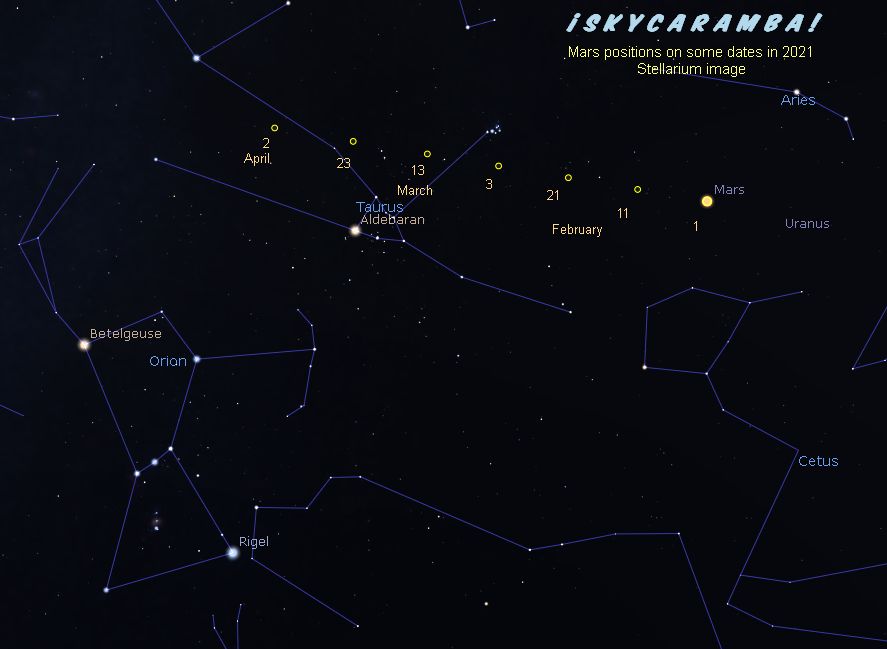Mercury starts the month as an evening object. If you can see it after sunset in February, that’s impressive. True to its reputation, the planet is heading sunward quickly. From around 13° north latitude, the planet sets an hour after sunset on the 1st.. That’s where the best viewing is. But even there, it’s impossible to see just a few days into the month. Mercury is at inferior conjunction on the 8th.

Mars is slowly moving from a place between Aries and the head of Cetus to a place near the Pleiades. The nearly first quarter moon will pass by the planet on the 18th.
Venus is a morning object and is almost as much of a challenge as Mercury. It rises an hour before the sun from 16° south on the 1st. Venus and Saturn will be close on the 6th. Maybe you can pick them out from a low southern latitude with binoculars, a clear horizon, and cooperative weather. On the 10th, a thin waning crescent moon is near Saturn above Venus which is getting close to Jupiter. Venus and Jupiter are closest the next morning. But even from the ideal latitude, they will be very close to the horizon while dawn’s light is obscuring many of the stars and planets.

By the middle of the month, Saturn is easier to spot rising before Jupiter. And Mercury has reappeared in our morning sky. The messenger planet is left of Jupiter on the 14th and seems on a fast track to meet Saturn. But about halfway between the two big planets, Mercury seems to change its mind and swing back to Jupiter. Mercury and Jupiter will have a close call on March 5th. Mercury hasn’t actually reached greatest elongation in the morning sky yet in February. It’s just not moving as fast westward as the stars behind it, so it has the appearance of retreating.
The moon’s situations this month: goes south of the equator on the 2nd, last quarter on the 4th, southern lunistice 25.0° on the 8th, new on the 11th, goes north on the 15th, first quarter on the 19th, northern lunistice 25.1° on the 23rd, and full on the 27th. Perigee is on the 3rd at 370,000 kilometers. Apogee is on the 18th at 404,500 kilometers.
Pay attention to astronomy news on February 18th. The NASA Perseverance rover is to land on Mars on that date. The rover will analyze pieces of rocks and dust on the red planet and look for evidence of microorganisms having lived there. It will also carry an experimental helicopter that engineers hope will fly in the Martian atmosphere.
Also, sometime this month, the Chinese Tianwen-1 orbiter and rover will arrive at the red planet. The mission is to look for water beneath the Martian surface. Scientists know there used to be water on the planet’s surface because of river channels and minerals that need water to form. They wonder if any still exists beneath the surface and if living organisms are in it.
Notable conjunctions in February:
3rd Moon and Spica 6.2°
6th Saturn and Venus 0.4°
6th Moon and Antares 5.3°
10th Moon and Saturn 3.3°
10th Moon and Venus 3.1°
10th Moon and jupiter 3.6°
11th Jupiter and Venus 0.4°
13th Mercury and Venu 4.5°
15th Mercury and Jupiter 3.8°
19th Moon and Mars 3.5°
20th Moon and Aldebaran 4.9°
23rd Mercury and Saturn 4.0°
24th Moon and Pollux 3.6°
26th Moon and Regulus 4.3°
